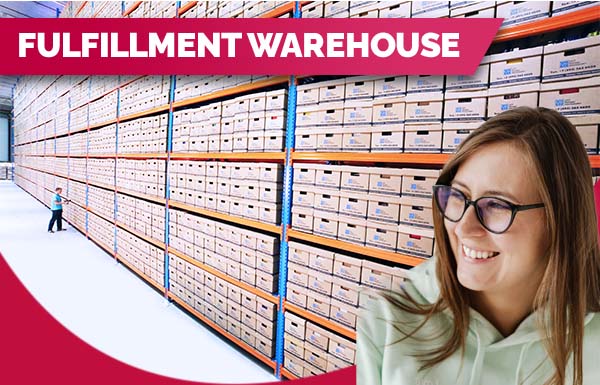Fulfillment Warehouse
Fulfillment Warehouse Table of Contents
- Fulfillment Warehouse
- The Meaning Of Fulfillment Warehouse And Fulfillment Center
- Fulfillment Warehouse Meaning
- Meaning Of Fulfillment Center
- How A Fulfillment Center Operates
- The Difference Between Fulfillment Center And Fulfillment Warehouse
- Long-Term And Short-Term Storage
- Operation Method
- Rate Of Pickups By Shipping Companies
- Benefits Of Fulfillment Center
- Overview of Fulfillment Warehouse
- Best Ecommerce Solution by Rating
- Best Ecommerce Solution by Price
- Best Ecommerce Solution by Rated Features
- Check Your Ecommerce Solution Offers Round The Clock Support
- Make Sure Your Ecommerce Solution Offers The Features You Need
- Best Ecommerce Software Solution Verdict
- Ecommerce Software Frequently Asked Questions
- What is the best Ecommerce Solution?
- What is the cheapest Ecommerce Solution?
- Is there a free Ecommerce Solution?
- View all of the top Ecommerce Software Solutions
- Ecommerce Alternatives
- Ecommerce VS Side by Side Comparisons

Fulfillment Warehouse
The Meaning Of Fulfillment Warehouse And Fulfillment Center
Warehouse and fulfillment centers are mostly used interchangeably. But each term means a different thing depending on the situation. However, the two are buildings for keeping inventory for businesses that sell physical products.
Although they are similar, the services they provide and the way they provide them differs. This blog post will help you to know the difference and the functions of the two for you to know the best one that suits your business.
Fulfillment Warehouse Meaning
Generally, a warehouse is a place where goods are kept for a period of time before being distributed or sold. It is a large building that stores inventory before they are sold. Sometimes, it contains containers, storage bins, pallets, etc with products. And each product is recognized with a specific stock keeping unit and equipment for moving the product around the warehouse.
Businesses that work with warehouse providers are mostly engaged in business-to-business orders on a large scale. Some businesses have their warehouse while some rent warehouses.
Renting a warehouse is cheaper for small businesses but you have to consider the location before making your final decision.
Meaning Of Fulfillment Center
A fulfillment center is a building where fulfillment providers fulfill buyer's orders for e-commerce retailers. Another name for fulfillment provider is third-party logistics (3PL). The main purpose of the fulfillment center is to handle the seller's inventory, store and ship the inventory directly to customers when they order the goods, this helps to simplify the storage and shipping processes for e-commerce business owners.
How A Fulfillment Center Operates
A fulfillment center is the heart of the logistic process that is required to get products to buyers.
The inventory is kept in a third-party logistic fulfillment center and is arranged to meet buyer's orders. So, once a customer buys a product, the item will be collected from the fulfillment center and be arranged for shipping.
Third-party logistics helps business owners in managing their inventory and shipping to customers on their behalf. This includes storage, packaging, receiving and shipping of goods, shipping cost, etc. which helps the business owner to focus more on other aspects of their business.
The Difference Between Fulfillment Center And Fulfillment Warehouse
Here are some differences between fulfillment warehouse and fulfillment center.
The main purpose of a warehouse is for storing inventory, while fulfillment enter integrates a more advanced method which includes handling inventory and arranging the product to get to the final consumer.
However, let's see the major difference between the two
Long-Term And Short-Term Storage
A fulfillment center is a warehouse for storing inventory, but the main purpose of a fulfillment center is to handle all the processes from storing to shipping goods to customers.
Ideally, inventory will not be in the fulfillment center for more than 30 days, but if that happens, it will be considered long-term storage and the owner will be charged a higher fee for that.
Merchants are required to keep an appropriate amount of goods in fulfillment centers so that fulfillment providers can meet up the customers' demands.
Operation Method
A warehouse is only used for keeping inventory. While a fulfillment center is always busy with activities. Third-party logistics provides services from storing to shipping of goods while a warehouse is only active when products are added or sent out.
Rate Of Pickups By Shipping Companies
Fulfillment providers usually have a relationship with numerous shipping companies. However, since it provides services to customers and businesses, they need to engage the service of multiple shipping companies to do the work for them. On the other hand, warehouses always have a constant pickup schedule for sending out goods and it costs less to send out goods at the same time.
Benefits Of Fulfillment Center
-
It Saves Resources For E-Commerce Business Owners
- It saves money and time for e-commerce business owners, since they handle multiple orders it will be easier for a third-party logistic center to get a good price for shipping of goods.
It also handles all other processes from storing inventory to shipping which allows business owners to face other aspects of running their business.
- Inventory Storage And Management - Fulfillment center helps to make storage and management of goods easy for business owners and is more efficient if a company can't handle the flow orders.
- It Allows Seller To Focus On Other Activities - Outsourcing some tasks to a fulfillment center helps business owners to focus more on other parts of running their business.
Scroll down to read our indepth Ecommerce Platforms guide. What you should know, Ecommerce Platforms features, price plans and support. Pros and Cons of Ecommerce Platforms as a ecommerce, everything is explained below.
Overview of Fulfillment Warehouse
Shopify is a software company that specialises in ecommerce software for small to enterprise level businesses.
Shopify is listed as the best ecommerce software related to Ecommerce Platforms. Shopify was founded in 2006 in Ottawa, Canada and currently has over 6,124 employees registered on Linkedin.
Best ECOMMERCE Solution By Rating
Get our stories delivered
From us to your inbox weekly.
 Shopify
Shopify
 Shopify Plus
Shopify Plus
 Volusion
Volusion
 WooCommerce
WooCommerce
 3dcart
3dcart
 Big Cartel
Big Cartel
 Ecwid
Ecwid
 Contalog
Contalog
 Kooomo
Kooomo
 Ecomchain
Ecomchain
 Trusted Shops
Trusted Shops
 PayMotion
PayMotion
 PayKickstart
PayKickstart
 Upclick
Upclick
 Storbie
Storbie
 Nexternal eCommerce Platform
Nexternal eCommerce Platform
 nopCommerce
nopCommerce
 Virto Commerce
Virto Commerce
 Gumroad
Gumroad
 FastSpring
FastSpring